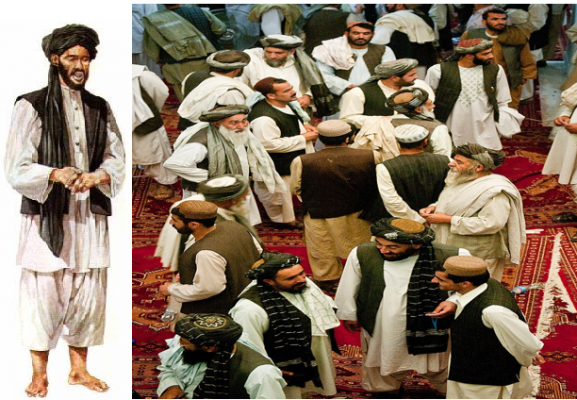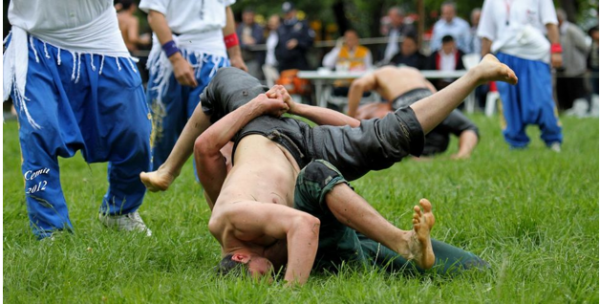The Pathans (better known as Afghans or Bhai’s) of Slave Island By Noor Rahim

The Pathans who originated from the regions of Afghanistan; Eastern Iran & Western India were Sunni Muslims. They were better known as Afghans or Bhai’s in Sri Lanka.
They were first known to have arrived in the Eastern Province of Ceylon (Sri Lanka) at Batticoloa, in the 1880’s, totalling around 1000 and quickly spread around the country. They were predominantly men; seeking employment; and had left families in their homeland. Once settled in their new domicile; an extremely few are known to have got married to local Moor or Malay women.
Though they were by trade, horse keepers, traders, and textile merchants; they were well renowned as Money Lenders & a few as textile vendors that went door to door touting their wares.
The last census done in the early 1921 had them around 550 in the Colombo area. Of which a majority were domiciled in the Slave Island area.
One has to remember that the Slave Island area was the hub of very heavy “Commercial Activity” with the Warehouses; Production Lines of Manufacture; Packaging and Distribution of Products from the various Go-Downs fringing the Beira Lake with the availability of water transportation to the Port of Colombo; The Railway yards and the City; with ease and economically (using the native flat bottomed “Padda” Boats; which was manually propelled by two men “punting” the boat with long poles from either side, in unison).
This was haven for the Pathans who were plying their lucrative Money Lending trade; especially aiming the labour force.
Most of them were easily recognizable by their physical, facial features and complexion; and furthermore by the unique apparel that they wore – comprising of a loose fitting tunic with a waist coat over it and baggy pantaloons trousers (drawers); and a headdress of a cloth turban woven around a skull cap. To complete their attire they always had a furled umbrella which they held in the crock of their arm, and prayer beads in the hand; as they ventured out on their errands. They really stood out in a crowd, in appearance.
Almost all these Afghans were domiciled along Union Place and Vauxhall Street which stood central to the Commercial activities in the surrounding areas. Hence their “money-lending” activities was one of ease.
They lived only in togetherness in houses which were more a dormitory or rooming houses as it is called these days. When passing their homes, one couldn’t but notice the frugal way they lived. There was no visible furniture to be seen; and each had his own space with a mattress on the ground, for a bed.
They were never known to really fraternize with the folks around; except for the purpose of money-lending and matters associated with their trade. They appeared to lead a sedentary and lackadaisical life; and self-centered within their own Community of Afghans. The main physical activity of theirs was on a pay-day and perhaps the day after pay-day; if the debtor absconded. Only the very few Afghans that touted the sale of textiles and apparels ventured out, with a sack of his goods slung over his shoulder showed any type of mingling with the local populace.
As mentioned earlier their busiest days was on a pay-day or in some instances a day or two after, when it was “collection of debt days”. You would see them in their unmistakable attire patrolling the main gates of the business establishments that had employed workers, to whom monies were loaned. They were real blood hounds and sought their “prey” to get back monies or the “interest”, for monies loaned. Some workers of course tried to break the routine by surreptitiously leaving through the back door of the establishment and skirting the edge of the Beira Lake to avoid the lender. However, the Afghan would, undeterred arrive in the early morning at the establishment and await the debtor, until the appropriate payment was made. They never got into arguments or even in scuffles in the myriad dealings with the locals. Perhaps it was plain diplomacy – dealt by the use of the concept of “embarrassing” the debtor in the eyes of the co-workers and the authorities in their work-place.
The Afghans stayed aloof from the rest of the local Community to keep in line with the old adage of “There’s no friendship in business”.
One did however see them outside their domicile in the evenings; as they congregated at a roundabout at Slave Island for a breath of fresh air. They did enjoy the music to the gospel songs performed by The Salvation Army that had its’ head-quarters abutting the roundabout. Of course, in the late 1940’s & very early 1950’s the traffic was very negligible at all times; and the roundabout was unique indeed; due to 6 main roads converging at the roundabout.

Being staunch Muslims by Faith; the Muslim Holidays were celebrated in a grand way. They congregated at the Galle Face Esplanade for Id Prayers in the morning; and by evening they gathered in their full regalia to commemorate the event. They very enthusiastically and vibrantly exhibited their prowess in the sport of wrestling; which was, I believe, in traditional Turkish Wrestling guidelines known and described as: “Karakucak or Karakucak Güreşi is one of the two Turkish folk wrestling styles practised nationwide and sanctioned by the Turkish Wrestling Federation. Like all other Turkish folk wrestling styles, karakucak competitions are held on grass fields. Competitors wear baggy trousers (şalvar) or special trousers named pırpıt made of canvas or other similarly sturdy fabric. In Sri Lanka they were popularly called “GUSTI” with the participants called “GUSTI PAHLAWANS”.
The event was looked forward by all; especially the children, as it was colourful and was great entertainment of the Festival Day; and had a real Carnival Atmosphere. The participants were only composed of robust and imposing Afghans; and they stood out with their complexion and other physical demeanour that stood distinctive from the local populace.
However, this colourful page in the history of Slave Island came to an end in or around 1956 when the late Mr. S.W.R.D. Bandaranaike came to power. He asked the Afghan Community to leave the Country over-night; stating that they were not contributing towards the land, but merely making money for themselves.
Finally, mention must made of a shrine of a Lady Saint enshrined in front of a famous Malay Mosque in Wekande, Slave Island named “Ossen Bee Aulia”. Some call her a Malay Saint and yet others say she is of Pathan origin. Since the Afghans were known to have married local Moor or Malay women in the Community and did not bring their families with them; we can only assume that the Saint maybe of mixed race. If so, the Afghans have left a landmark in their short sojourn in the Resplendent Isle of Sri Lanka. Albeit they did live a legacy – be it bad or good.
Noor Rahim
January 15 2022







